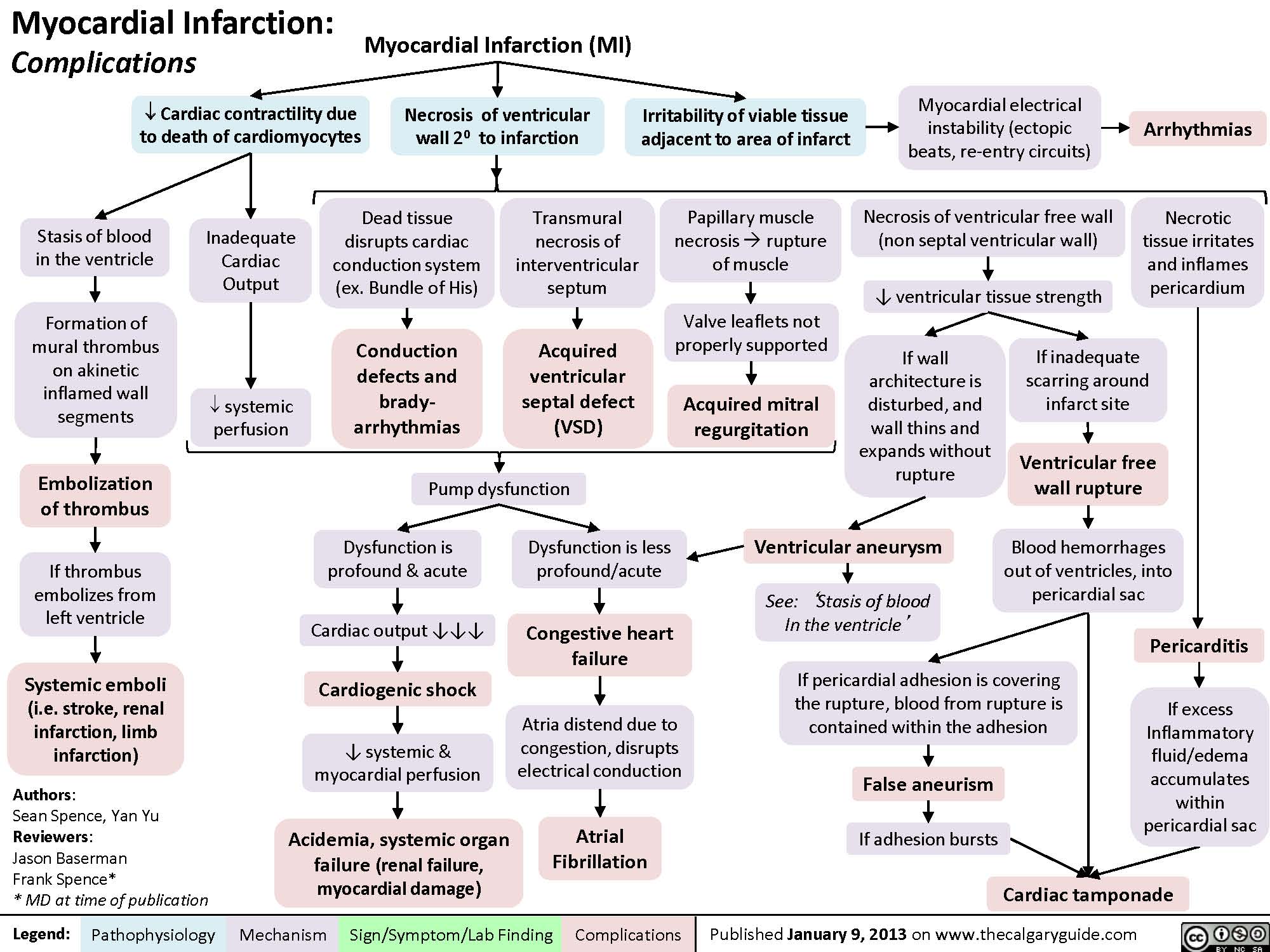Myocardial Infarction: Causes, Symptoms, Diagnosis, Treatment And MCQs for NEET, GPAT, CSIR NET JRF
“Acute myocardial infarction is also known as heart attack and is the most important form of IHD (ischemic heart disease).
INTRODUCTION :-
1.] Acute myocardial infarction may virtually occur in all ages, though the incidence is higher in elderly.
2.] Males throughout their life are at greater risk of developing acute MI as compared to females, probably because of the protective influence of oestrogen.
CAUSES OF MYOCARDIAL INFRACTION :-
Some of the most important blood vessels towards the heart are the arteries. They take oxygen rich blood to your body and all of your organs. The coronary arteries take oxygen rich blood specifically to your heart muscles. When these arteries become blocked or narrowed due to the buildup of plaque the blood flows through your heart can decrease significantly or stop completely. This can cause a heart attack. Several factors that may lead to blockage in the coronary arteries like bad cholesterol, saturated fats and trans fats.
SYMPTOMS :-
While the classic symptoms of a heart attack are the chest pain, and shortness of breath, the symptoms can be quiet varied. The most common symptom of heart attack includes :-
- Pressure or tightness in the chest.
- Pain in the chest, back, jaw, and other areas of the upper body that lasts more then in few minutes or that goes away and then come back.
- Shortness of breath.
- Sweating.
- Nausea.
- Vomiting.
- A cough.
- Dizziness.
- Fast heart rate.
DIAGNOSIS :-
An electrocardiogram may be done to measure your heart electrical activity. Most important characteristics in ECG change is ST segment elevation which is acute in MI (termed as STEMI); other changes include T wave inversion and appearance of wide deep Q wave. Other diagnostic test includes a stress level test to see how your heart respond to certain situations, such as exercise, an angiogram with coronary categorization to look for areas of blockage in your arteries and an echo cardiogram to help identify areas of your heart that aren’t working properly.
Myocardial Infraction Pathogenesis


TREATMENT :-
A number of different medications can also be used to treat a heart attack :
- Blood thinners, such as aspirin are often use to break up the blood clots.
- Thrombolytics are often used to dissolve clots.
- Antiplatelet drugs such as clopidogerl.
- Nitroglycerin can be used to widen your blood vessels.
- Beta – blockers to lower your blood pressure.
- ACE inhibitors and pain relievers.
MULTIPLE CHOICE QUESTIONS [MCQs] :-
1.] What is myocardial infarction ?
a. Heart failure
b. Heart attack
c. Cardiac arrest
d. All of the above
2.] Sudden cardiac arrest means that the heart has ?
a. Stop beating
b. Beats dangerously slow
c. Has a cycle of beating and stopping
d. Skip beats
3.] Symptoms of heart attack can include ?
a. Dizziness, weakness, arm pain, pressure in chest
b. Heart palpitation
c. No symptoms at all
d. All of the above
4.] Heart disease is the leading cause of death of American women ?
a. True
b. False
5.] Risks of heart disease include ?
a. High blood pressure and cholesterol
b. Smoking
c. Lack of exercise
d. All of the above
6.] In the heart, a clogged artery causes a heart attack. In the brain it causes a ?
a. Migraine
b. Mental illness
c. Stroke
d. Seizure
7.] When heart trouble is sensed, who waits at least two hours before help is called ?
a. Men
b. Women
c. Both Men and women
d. Children
8.] The term “heart failure” means the heart has stopped working completely ?
a. True
b. False
9.] The most common type of heart disease in U.S. is ?
a. Coronary heart disease
b. Atrial fibrillation
c. Mitral valve prolapse
d. Arrhythmia
10.] The medical term of chest pain is ?
a. Angina
b. There is no medical term of Chest pain
c. Flutter
d. Arrhythmia
SOLUTION :-
1.] (b) heart attack
2.] (a) stops beating
3.] (d)
4.] (a)
5.] (d)
6.] (c) stroke
7.] (c) both men and women
8.] (b)
9.] (a) coronary heart disease
10.] (a) angina
List of Successful GPATINDIAN CANDIDATES
—
REFERENCES :-
1.] Textbook Of Pathology By Harsh Mohan; 7th edition; Page no. 409 – 415.
2.] Robbin’s Basic Pathology; 5th edition; Page no. 528 – 540.